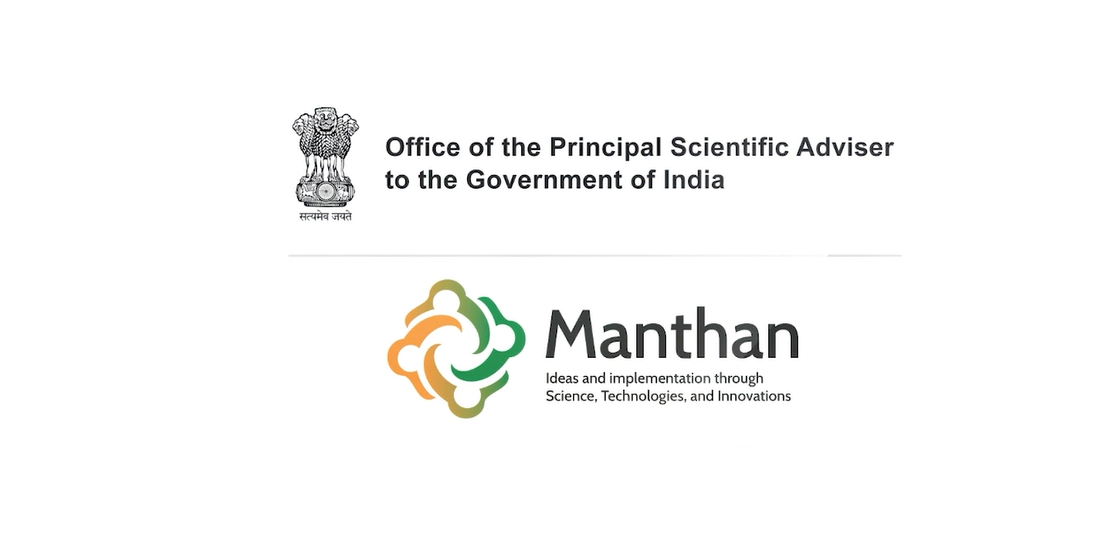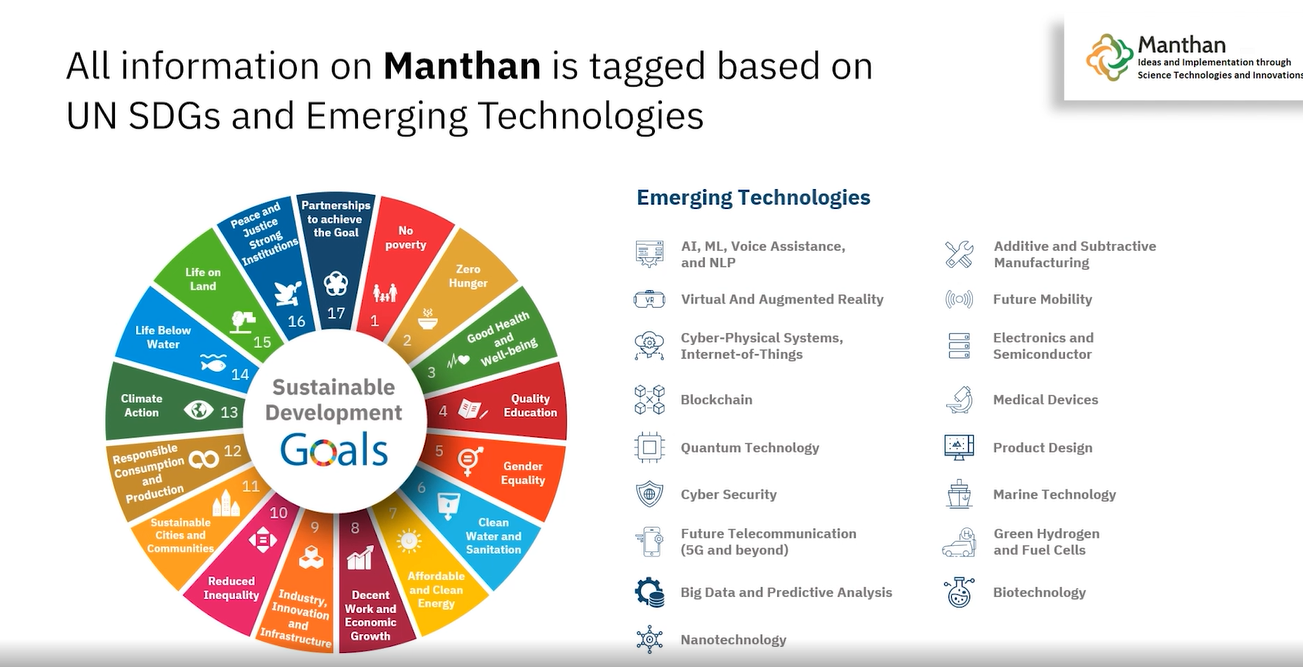
- A+
- A
- A-

The official logo of the Manthan platform
Image credits: Office of the PSA
On 15th August 2022, Prof. Ajay Kumar Sood, Principal Scientific Adviser (PSA) to the Government of India, launched the Manthan Platform—the creation of which, he declared, was “a pivotal step in building, nurturing, and celebrating the outcome of partnerships between various stakeholders of science, technology, and innovation ecosystems in India.”
Manthan is an outcome of the efforts of the Strategic Alliances Division of the Office of the PSA. It is a digital platform that aims to build and nurture relationships between industry and academia so that more challenges can be solved faster and better, to meet India’s national targets and the United Nations’ Sustainable Development Goals (SDGs). The platform provides a decentralised and democratised environment for easy collaborations between industry, philanthropic organisations, and entities in the scientific research and development (R&D) ecosystem.
Speaking of how Manthan was conceptualised, Dr. Sapna Poti, Director of the Strategic Alliances Division, said: “During our work at the Strategic Alliances Division, we brought together various stakeholders through 240 projects worth about ₹1800 crore. But we realised that this is just touching the tip of the iceberg of a huge ecosystem of about 10,94,432 faculty members in premier institutes, more than 3 million researchers, 73,205 start-ups, and so on. So, we thought, how can a 3-member team from the Office of the PSA manage these volumes? That is where the idea of Manthan was born.”
True to the mandate of the Division, Manthan enables demand from multiple industries to feed into the academia and start-up ecosystem, and ensures that research from this ecosystem finds industrial partners willing to apply it on the ground.
One of the key features through which Manthan enables collaboration on a large scale is its straightforward and uncomplicated interface, which makes for effortless navigation and use. For instance, available opportunities are organized into distinct categories, such as the type of SDG impacted or the science, technology, and innovation cluster, making it quite easy for any user to find what they are looking for. The platform also contains preliminary information regarding these opportunities and proposals, access to which does not require user registration. The other key element is that it allows stakeholders to directly communicate with each other, with minimal moderation, thus doing away with the bottlenecks that exist in the physical world.

The categorization and number of opportunities on Manthan
Image credit: Manthan website
Sandeep Singhal, Senior Adviser, Aavana Capital, reiterated the latter point during the launch of the platform, citing his experience during the early stages of the COVID–19 pandemic. He talked about how cutting-edge technology and innovations were needed to bridge the supply gap in our healthcare system during that period. As a result, ad hoc partnerships had to be formed. Those partnerships were able to make a great impact; for instance, as Prof. Sood pointed out, they led to the indigenous development of diagnostic kits, reagents, personal protective equipment, mobile labs, ventilators, rapidly deployable extension hospitals, and disinfection technologies. But “a structured and comprehensive platform like Manthan acts a force multiplier in such situations, connecting institutions or stakeholders having specific innovation requirements to solution providers who can meet their innovation needs,” explained Mr. Singhal.
It should be noted that Manthan is not the first of its kind. The State of Kerala, in 2020, created a similar, albeit smaller-scale platform named the Research Innovation Network Kerala (RINK), to commercialise innovations from research institutions by connecting them with start-ups and corporates. There is also SanRachna, a multi-domain collaborative platform developed by Bharat Heavy Electronics Limited (BHEL) under the guidance of the Ministry of Heavy Industries (MHI), Government of India, which aimed to provide a one-stop solution to bring together start-ups, entrepreneurs, researchers, and industries. While these have seen success within their domains, neither has the scale that Manthan is aiming for. By integrating with Manthan, the Government of Kerala hopes to achieve its vision of transforming Kerala into a knowledge economy, and BHEL hopes to ramp up technological development and deployment across the board.
In addition to scale, a crucial feature of Manthan is its ability to sync up with the programming interface of other platforms, while maintaining data privacy and security. This allows for smoother and more secure interaction between stakeholders like philanthropists and funders, who operate through platforms of their own, and whose own function within the research and innovation ecosystem is to drive collaboration. Manthan will help augment their efforts. To quote Bhomik Shah, Founder and CEO of CSRBOX, “This platform has a lot of significance and importance for us at CSRBOX—its syncing abilities and privacy maintenance will boost the confidence of CSR and philanthropies to leverage the platform.”
Shah speaks largely of national collaborations. But apart from domestic partnerships, Manthan also aims at promoting international associations. One such partnership is between the Office of the PSA and the Swedish Embassy, to further collaborative research and co-innovation between the two countries. Dr. Wikström, Innovation and Science Counsellor, Embassy of Sweden in India, who was a speaker at the Manthan launch event, mentioned, “The need of the hour is to have focused interventions in the area of matchmaking [between industry and academia]. My office, along with the Office of the PSA, is working on creating more people-to-people bridges through connecting clusters in both countries….Manthan, as a system and platform, will act as a catalyst here.”
Manthan promises to change the narrative of research and innovation, and the continuous participation and support of all involved stakeholders will be foundational to its success. Today, while significant work in the science and technology system drives the nation, most of the communities doing this work are disparate and operating in silos. Manthan brings this siloed brilliance together to form a single community working towards a common goal—solving India’s key challenges and ensuring global recognition of the country’s potential.
Krittika Sengupta is a part-time content writer and editor, and a full-time content consumer.




